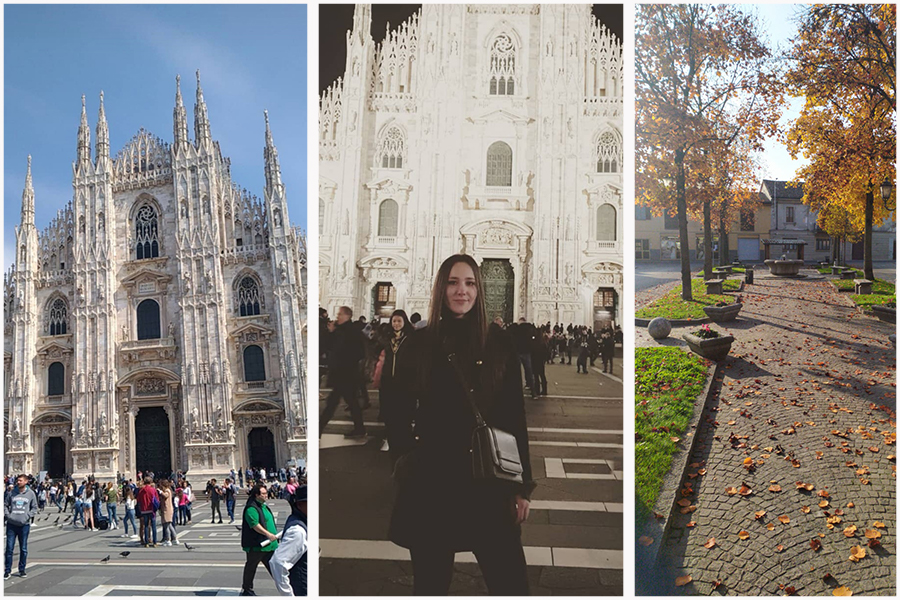They keep saying that Italy is an example for other countries on how to deal with the coronavirus crisis. That means that everybody else must literally be in hell then, says Irene Bisoni.
On the day when England entered its second national lockdown, Italian Prime Minister Giuseppe Conte announced a new strategy for the peninsula based on different risks areas, which has been implemented on November 6 and will run until December 3. The 20 Italian regions will be divided in three different zones:
- RED: Highest risk zone. People cannot leave their region and province and movements need to be justified with an auto-certification. Remote learning applied for middle and high schools. Universities closed, but with exemptions. Certain shops remain open. The regions involved are Lombardy, Piedmont, Calabria and Valle d’Aosta.
- ORANGE: Mid-risk area. Same rules as in the Red area. People are advised not to leave their provinces and regions, but they can transit in a yellow region or province. Bars and restaurants are closed, and some shops remain open. Remote learning just for high schools and universities remain open only for laboratories. Regions affected are Puglia and Sicily.
- YELLOW: Low risk area. People can move freely until 10pm, when curfew starts. After 10pm, movements need to be justified. Restaurants and bars are open until 6pm. Shops open. Remote learning for high schools. Regions affected are all others.
Are you confused? Me too. And many Italians with me.
Astonishing to me is the amount of details that Conte presented in his ordinance. Exemptions are many, and they vary for each region, but also for the provinces within those regions.

For example, Lombardy, which is the region I am from, counts for 12 provinces with strong and sometimes divisive standpoints. Trying to practically organise, direct and control each province and the many municipalities seems to me a gargantuan enterprise.
Back in March, Italy set a fairly good example for others. It promptly went into lockdown, when others were still tiptoeing around the issue. I had the vantage point to see what was going on back home and take precautions before others. Because I knew that a national lockdown in the UK was unavoidable at that point.

But what about now? This new Italian strategy sounds to me just a more creative and picturesque version of the Tier system. And we now know for a fact, the Tier system did not work as expected. Many the theories out there on why.

Is it maybe that people lack the right support, they are confused about the message and don’t know what to do? Or is that people are tired, angry or worn out by the prospect of going in and out of lockdowns for the foreseeable future? Or a lack of direction that the government seems to have? Or a combination of all of these? OR something else?
We will probably never know.
But I do feel concerned as to why Italy did not look at England to see that local lockdowns failed to give results. It seems to me that Conte is trying to avoid the unavoidable, in a last attempt to save our economy.
From the conversations I had with people back home, I sensed a lack of clarity and direction, and fears that this strategy came along way too late.
Alfredo Valloreo, 23, originally from Abruzzo, said the new system might be positive in the long run but he doesn’t agree with the movement within regions.
Alfredo, who is now a student at LSE in London, said: “the inter-regional movements should be prohibited also within ‘yellow’ regions”.

He also added: “I feel more optimistic about Italy compared to England, but I fear Italy acted too late.
“We should all look at Germany as an example.
“They went into lockdown with fewer cases and kept the economy going”.
Francesca Crea, 40, from Milan, said to me:” this is a choice based on politics, not the public interest.
“Conte is scared about the opposition in the government and the continuous protests in the streets.
“Only choice he had was to find a middle ground. But people are confused because it is not a real lockdown.

“If the situation is so bad, they should impose a hard lockdown and give supports to the business hit the most.
“People need a clear direction. And the number of different viewpoints and information out there does not help”.
Rosanna Bussetti, 60, from Caselle Lurani near Lodi in Lombardy, also agrees with the confusion created by this new colour-based system.
She said: “They are saying that we have to cohabit with this virus.

“But how can we do this if the number of cases is rising instead of decreasing?”
“And why the government forced businesses to spend money on PPE and other anti-covid-19 measures if now they need to close again?”
These are questions which I find difficult to answer. It frustrates me to know that my government let so many people down. Once again. If Italy is the example we really need right now, then I fear for other countries.
The slogan displayed in March of “everything is going to be fine”, and people singing and dancing on balconies seems a distant memory.
As the president of Lombardy Attilio Fontana said in a written statement about the new restrictions: “This is a slap in the face to Lombardy”.
And for Italy as a whole, I would add.
By Irene Bisoni
Lead image: Irene Bisoni.

